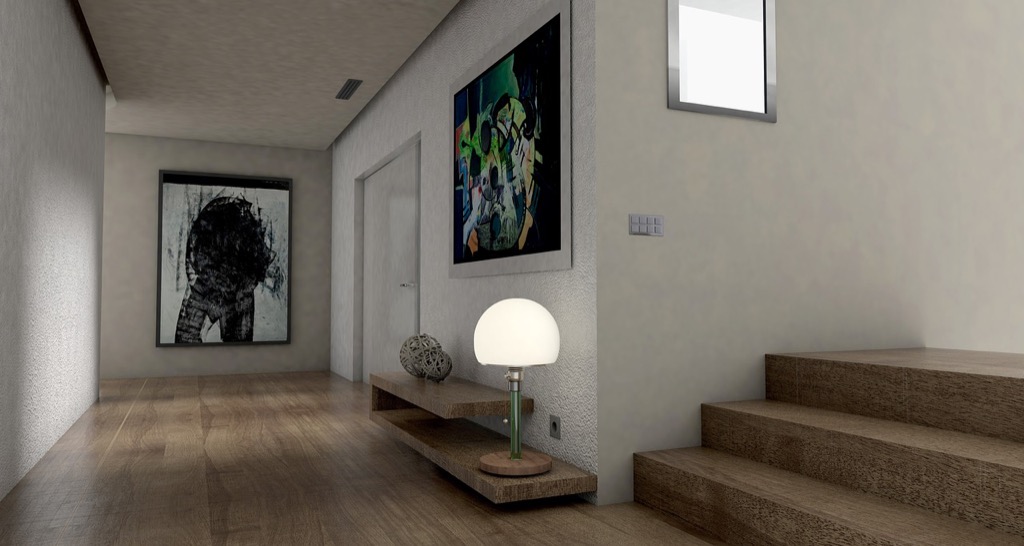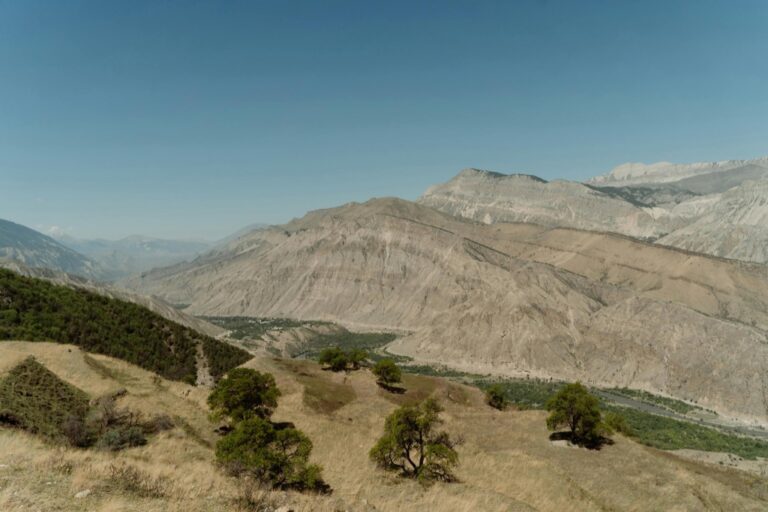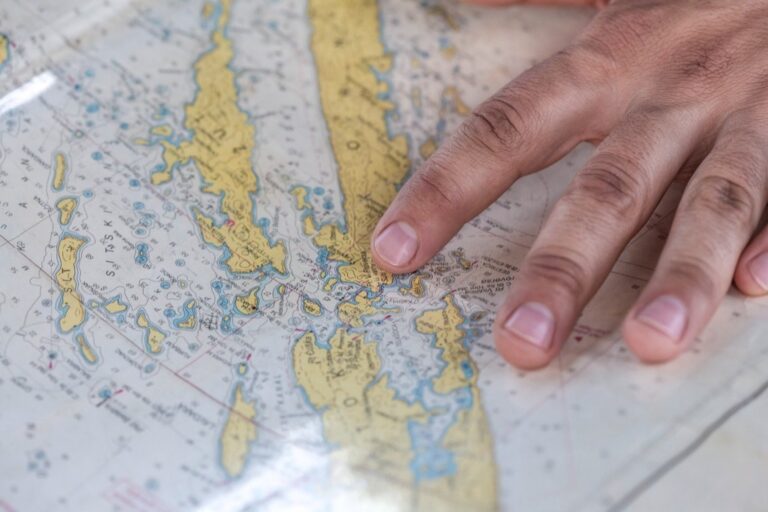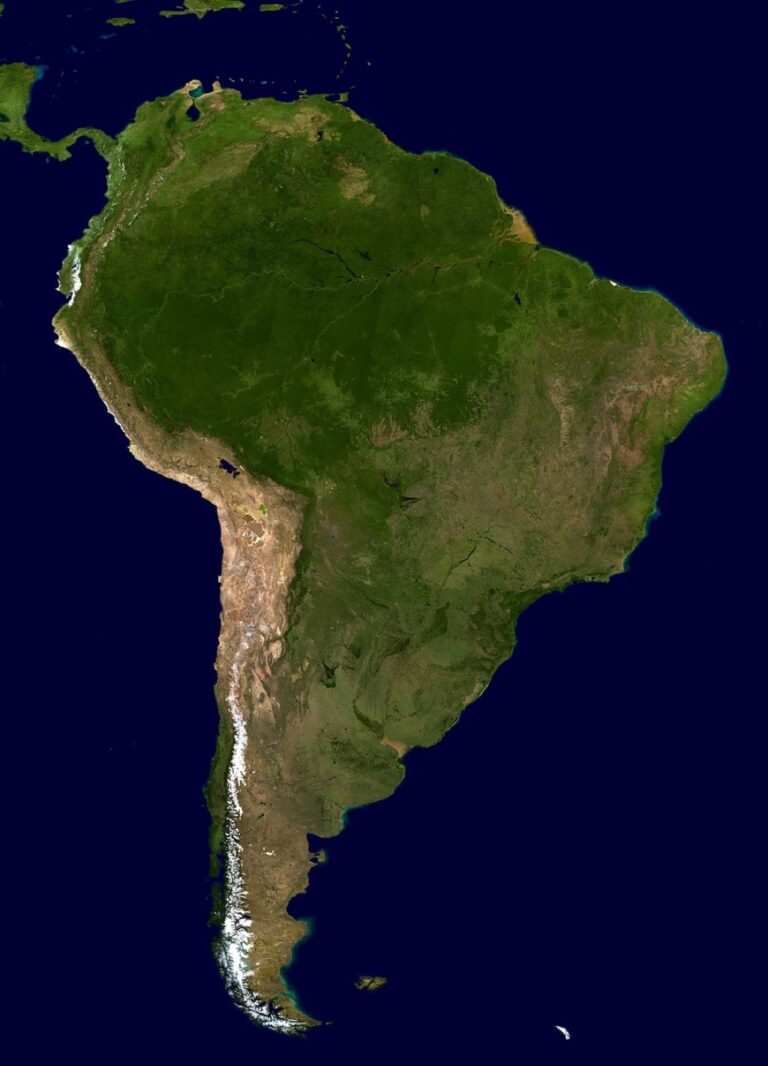7 Advanced Data Visualization Techniques That Reveal Hidden Patterns
Maps aren’t just about showing where things are anymore — they’re powerful storytelling tools that can reveal hidden patterns in your data. You’ve probably seen basic choropleth maps and simple point markers but advanced visualization techniques can transform complex datasets into compelling visual narratives that drive real business decisions.
Whether you’re analyzing customer behavior across regions or tracking environmental changes over time these seven advanced mapping techniques will help you unlock insights that traditional charts simply can’t deliver. From heat density overlays to animated time-series visualizations each method serves a specific purpose in making your spatial data more actionable and easier to understand.
The right visualization technique can mean the difference between overwhelming your audience with data points and guiding them toward clear actionable insights.
Disclosure: As an Amazon Associate, this site earns from qualifying purchases. Thank you!
P.S. check out Udemy’s GIS, Mapping & Remote Sensing courses on sale here…
Choropleth Mapping With Multi-Variable Color Schemes
Advanced choropleth mapping moves beyond single-variable color schemes to display multiple data dimensions simultaneously. You’ll create more informative maps by encoding two or more variables into color patterns, revealing complex relationships that single-variable maps can’t capture.
Understanding Statistical Data Distribution
Statistical distribution analysis determines your color scheme’s effectiveness. You’ll need to examine each variable’s range, outliers, and data clustering patterns before designing your color palette. Identify whether your data follows normal, skewed, or uniform distributions to select appropriate classification breaks.
Calculate quartiles, standard deviations, and percentile ranges for each variable you’re mapping. Use statistical software like R or Python to generate distribution histograms and scatter plots showing variable relationships. This analysis reveals natural breakpoints and helps you avoid misleading color classifications that distort your data’s true patterns.
Implementing Bivariate Color Coding
Bivariate color schemes combine two variables into a single color matrix. You’ll create a grid where one variable controls hue progression (red to blue) while the second variable controls saturation or lightness values. Popular combinations include population density with income levels or temperature with precipitation data.
Tools like QGIS, ArcGIS Pro, and Observable Plot offer bivariate mapping capabilities with pre-built color matrices. Design your legend as a square grid showing all possible color combinations, placing it prominently to help readers decode your map. Test color combinations for colorblind accessibility using tools like ColorBrewer 2.0.
Choosing Appropriate Classification Methods
Classification methods determine how your data ranges translate into color categories. You’ll select from natural breaks (Jenks), quantiles, equal intervals, or standard deviations based on your data’s distribution characteristics. Natural breaks work best for clustered data, while quantiles ensure equal representation across categories.
Consider your audience’s familiarity with statistical concepts when choosing classification complexity. Business stakeholders often prefer simple equal intervals, while researchers may need more sophisticated methods like geometric intervals or manual breaks. Document your classification rationale to maintain transparency and enable reproducible results across similar datasets.
Heat Map Overlays for Density Analysis
Heat map overlays transform point data into continuous density surfaces, revealing spatial patterns that individual markers can’t effectively communicate. You’ll find these visualizations particularly powerful when analyzing customer locations, incident reports, or demographic concentrations across geographic regions.
Creating Kernel Density Estimations
Kernel density estimation (KDE) generates smooth surfaces from point data using statistical algorithms. Configure your bandwidth parameter between 500-2000 meters for urban analysis, adjusting based on your study area’s scale. ArcGIS Pro’s Kernel Density tool and QGIS’s Heatmap plugin both offer Gaussian kernels with customizable search radius controls. Set your cell size to one-tenth of your bandwidth for optimal resolution while maintaining processing efficiency.
Adjusting Transparency and Blending Modes
Transparency settings between 60-80% allow underlying map features to remain visible through heat map layers. Use multiply blending mode to darken base maps while preserving color relationships, or apply screen mode for lighter overlays on dark backgrounds. Photoshop-style blending modes in modern GIS software create natural-looking heat gradients. Test different opacity levels with your specific base map to achieve optimal contrast without overwhelming geographic context.
Combining Multiple Heat Map Layers
Multi-layer heat maps reveal temporal patterns and comparative densities through strategic color separation. Assign complementary colors like blue and orange to different datasets, maintaining 50-70% transparency for each layer. Use additive color models where overlapping areas create distinct visual signatures indicating high-density intersections. Document your color choices and provide clear legends explaining each layer’s meaning to prevent viewer confusion during analysis.
3D Terrain Visualization With Elevation Data
Three-dimensional terrain visualization transforms flat elevation data into immersive landscapes that reveal topographic relationships invisible in traditional 2D maps. This technique bridges the gap between abstract elevation contours and intuitive spatial understanding.
Integrating Digital Elevation Models
Digital Elevation Models (DEMs) serve as the foundation for accurate 3D terrain visualization. You’ll find USGS 1-arc-second DEMs provide 30-meter resolution coverage across the United States, while SRTM data offers global coverage at 90-meter resolution. Import your elevation data through QGIS’s Raster menu or ArcGIS Pro’s Data Management tools, ensuring proper coordinate system alignment with your base mapping layers. Process large DEM files using tiling techniques to maintain system performance during rendering operations.
Achieve a flawless, even complexion with e.l.f. Flawless Satin Foundation. This lightweight, vegan formula provides medium coverage and a semi-matte finish for all-day wear, while hydrating your skin with glycerin.
Applying Realistic Lighting and Shadows
Lighting calculations create depth perception that makes terrain features instantly recognizable to viewers. Configure your sun angle between 315-45 degrees azimuth with 25-45 degree elevation angles to simulate natural daylight conditions. Tools like Blender’s cycles renderer and ArcScene’s illumination settings allow precise shadow control through ambient occlusion parameters. Adjust shadow intensity to 60-80% opacity to preserve underlying data visibility while maintaining realistic terrain definition across your visualization surface.
Optimizing Performance for Large Datasets
Level-of-detail (LOD) algorithms maintain smooth performance when working with high-resolution elevation datasets exceeding several gigabytes. Implement progressive mesh techniques that display simplified geometry at distance while preserving detail for close-up viewing areas. Configure your 3D engine to use 512×512 pixel texture tiles with automatic compression ratios of 4:1 or 8:1 depending on visual quality requirements. Enable GPU acceleration through OpenGL or DirectX rendering pipelines to achieve frame rates above 30 FPS during interactive navigation sessions.
Flow Maps for Movement Pattern Analysis
Flow maps reveal movement patterns between locations by visualizing connections as dynamic lines that show direction, volume, and relationships across geographic space.
Designing Curved Flow Lines
Curved flow lines create visual hierarchy and reduce overlap in complex movement networks. You’ll achieve optimal results using Bézier curves with control points positioned at 25-30% of the total line length. QGIS’s “Curved line” renderer and ArcGIS Pro’s “Flow direction” symbology automatically generate smooth arcs. Adjust curve tension between 0.3-0.7 to balance visual appeal with spatial accuracy while maintaining clear directional flow.
Scaling Line Width by Data Volume
Line width scaling transforms raw data volumes into immediately recognizable visual patterns. You should establish consistent width ratios using logarithmic scaling for datasets spanning multiple orders of magnitude. Set minimum widths at 1-2 pixels for visibility and maximum widths at 15-20 pixels to prevent overwhelming smaller flows. ArcGIS Pro’s “Proportional symbols” and D3.js libraries offer precise width controls based on your data attributes.
Managing Visual Clutter in Complex Networks
Strategic filtering and bundling techniques eliminate visual chaos in dense flow networks. You can implement edge bundling algorithms that group similar directional flows into shared pathways before separating at destinations. Filter flows below statistical thresholds using quartile breaks or natural breaks classification. Apply transparency gradients (50-80% opacity) for secondary flows while maintaining full opacity for primary connections to preserve analytical clarity.
Animated Time-Series Map Sequences
Animated time-series sequences transform static geographical data into dynamic narratives that reveal temporal patterns across space. You’ll create compelling visualizations that show how phenomena evolve, migrate, or intensify over specific time periods.
Building Temporal Data Frameworks
Temporal data frameworks require structured time stamps and consistent data intervals for smooth animation playback. You’ll need to standardize your temporal resolution whether you’re working with daily, monthly, or yearly data points. Create a master timeline that accounts for missing data periods and establishes uniform time steps. Tools like PostGIS and ArcGIS Pro handle temporal data indexing efficiently, while D3.js offers flexible frameworks for web-based animations. Your data structure should include timestamp fields, spatial coordinates, and attribute values organized in chronological order for seamless processing.
Creating Smooth Transition Effects
Smooth transition effects depend on interpolation algorithms that calculate intermediate values between data points. You’ll achieve professional results using linear interpolation for gradual changes or cubic spline interpolation for more natural-looking transitions. Configure frame rates between 15-30 fps for optimal viewing experience without overwhelming processing requirements. Mapbox GL JS and Leaflet provide built-in animation libraries with customizable easing functions like ease-in-out or bounce effects. Apply consistent timing functions across all animated elements to maintain visual coherence throughout your sequence.
Implementing Interactive Timeline Controls
Interactive timeline controls give users precise navigation through your temporal data using scrubber bars and playback buttons. You’ll implement range sliders that allow users to jump to specific time periods or adjust playback speed dynamically. JavaScript libraries like noUiSlider or custom HTML5 input ranges provide responsive timeline interfaces. Add play/pause functionality with keyboard shortcuts for enhanced usability. Include time stamp displays and progress indicators that show current position within the overall timeline. Consider adding bookmark features that let users save and return to specific temporal moments of interest.
Isochrone Maps for Accessibility Modeling
Isochrone maps reveal the true reach of locations by showing areas accessible within specific time intervals rather than simple distance circles. These specialized visualizations transform how you analyze spatial accessibility across urban planning and business location decisions.
Calculating Travel Time Boundaries
Calculate precise travel time boundaries using routing algorithms that account for actual road networks and traffic conditions. You’ll need to configure network datasets in ArcGIS Network Analyst or OSRM with speed limits and turn restrictions for each road segment. Set multiple time intervals like 5, 10, and 15 minutes to create nested isochrone polygons that reveal accessibility gradients effectively.
Incorporating Multiple Transportation Modes
Incorporate multiple transportation modes by running separate routing calculations for walking, cycling, driving, and public transit networks. You can overlay these different isochrones using distinct color schemes – typically green for walking, blue for cycling, and red for driving routes. Configure mode-specific parameters like walking speeds of 3.1 mph and cycling speeds of 12 mph for realistic boundary calculations.
Visualizing Service Area Coverage
Visualize service area coverage through transparency overlays that highlight accessibility gaps and coverage overlaps between multiple service points. Use graduated color schemes where darker areas represent shorter travel times and lighter areas show extended accessibility boundaries. Configure polygon simplification tools to reduce vertex density while maintaining shape accuracy for cleaner map displays and faster rendering performance.
Multi-Scale Clustering for Point Data
Multi-scale clustering transforms overwhelming point clouds into meaningful patterns that adapt intelligently to your viewer’s zoom level. This technique prevents visual overload while preserving critical spatial relationships across different scales.
Implementing Dynamic Clustering Algorithms
Dynamic clustering algorithms automatically group nearby points based on screen distance rather than geographic proximity. K-means clustering works effectively for datasets under 10,000 points, while DBSCAN algorithms handle larger datasets with irregular distributions. Configure your clustering parameters to trigger regrouping when zoom levels change by more than two steps. Popular mapping libraries like Leaflet.markercluster and Google Maps MarkerClusterer provide pre-built solutions with customizable distance thresholds and minimum cluster sizes.
Designing Responsive Zoom Behaviors
Responsive zoom behaviors ensure your clusters split and merge smoothly as users navigate between scales. Set breakpoint zoom levels where clustering density changes – typically at city, neighborhood, and street scales. Configure cluster expansion animations to last 300-500 milliseconds for natural transitions. Your clustering should reveal progressively more detail: show aggregate counts at country level, category breakdowns at state level, and individual points at neighborhood level. Test zoom transitions across mobile and desktop devices to ensure consistent performance.
Balancing Detail and Performance
Balancing detail and performance requires strategic data loading and rendering optimization techniques. Implement viewport-based loading to fetch only points within the current map bounds plus a buffer zone. Use level-of-detail algorithms that reduce point precision at wider zoom levels – store coordinates at 4 decimal places for city views versus 6 decimal places for street views. Configure your clustering to cap maximum points per cluster at 100-500 items depending on your data density and server capacity.
Conclusion
These seven advanced mapping techniques give you the power to transform raw geographical data into compelling visual stories that drive better decision-making. By moving beyond basic point markers and simple color fills you’ll unlock deeper insights that traditional maps simply can’t reveal.
The key to success lies in matching your visualization technique to your specific data type and audience needs. Whether you’re analyzing movement patterns with flow maps or revealing accessibility gaps through isochrone mapping each method serves a distinct purpose in your analytical toolkit.
Start by experimenting with one or two techniques that align with your current projects. As you build confidence with these advanced methods you’ll discover new ways to communicate complex spatial relationships that engage your audience and support data-driven insights.
Frequently Asked Questions
What are the main limitations of traditional mapping techniques?
Traditional mapping techniques like basic choropleth maps and simple point markers fail to reveal complex data relationships and patterns. They often oversimplify multi-dimensional datasets, making it difficult to communicate meaningful insights. These methods can overwhelm viewers with cluttered visuals or provide insufficient detail to support effective decision-making.
How do advanced choropleth maps differ from basic ones?
Advanced choropleth maps use multi-variable color schemes to display multiple data dimensions simultaneously, revealing complex relationships that single-variable maps cannot capture. They employ bivariate color coding, combining two variables into a single color matrix, and utilize sophisticated classification methods to translate data ranges into meaningful color categories.
What are heat map overlays and when should they be used?
Heat map overlays transform point data into continuous density surfaces using Kernel Density Estimations (KDE). They’re ideal for revealing spatial patterns that individual markers cannot effectively communicate, such as crime hotspots or customer concentration areas. They work best when you need to show density distributions rather than individual data points.
What tools are recommended for creating advanced map visualizations?
The article recommends QGIS and ArcGIS Pro as primary tools for advanced mapping techniques. For temporal data management, PostGIS is suggested for efficient data indexing. These tools provide the necessary functionality for implementing complex visualization methods like 3D terrain modeling, flow maps, and animated time-series sequences.
How do 3D terrain visualizations enhance data understanding?
3D terrain visualizations transform flat elevation data into immersive landscapes that reveal topographic relationships invisible in 2D maps. They integrate Digital Elevation Models (DEMs) with realistic lighting and shadows to enhance depth perception, making it easier to understand geographic features and their spatial relationships.
What are flow maps best suited for?
Flow maps are ideal for analyzing movement patterns and connections between locations. They visualize direction, volume, and relationships across geographic space using dynamic lines. Common applications include migration patterns, trade routes, commuting flows, and supply chain networks where understanding movement and connectivity is crucial.
How do animated time-series maps improve data visualization?
Animated time-series maps transform static geographical data into dynamic narratives that reveal temporal patterns across space. They show how data changes over time through smooth transitions and interactive timeline controls, making it easier to identify trends, seasonal patterns, and temporal relationships in geographical datasets.
What are isochrone maps and their practical applications?
Isochrone maps show areas accessible within specific time intervals rather than simple distance circles. They calculate precise travel time boundaries using routing algorithms that account for road networks and traffic conditions. They’re valuable for analyzing service coverage, accessibility planning, and location-based decision making.
How does multi-scale clustering help with large point datasets?
Multi-scale clustering transforms overwhelming point clouds into meaningful patterns that adapt to the viewer’s zoom level. It uses dynamic clustering algorithms like K-means or DBSCAN to group nearby points based on screen distance, preventing visual overload while preserving critical spatial relationships and ensuring smooth performance.
What factors should be considered when choosing a mapping technique?
Consider your data type, audience familiarity with statistical concepts, the story you want to tell, and performance requirements. Analyze your data for range, outliers, and clustering patterns. Choose techniques that effectively communicate insights without overwhelming viewers, and always document your methodology for transparency and reproducibility.






